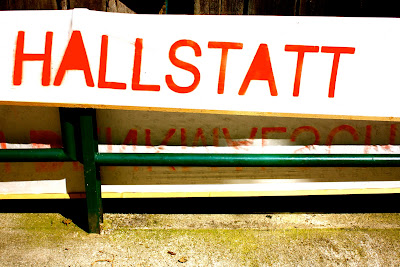They say the cafe is an extension of their living room. A tradition from times long since past when apartments were too small for one to enjoy breakfast or a cup of coffee with a friend. It is something that they do—we even learned about it as a hobby in German class, “Ins café gehen macht mir Spass.” There are cafés on every corner, and when you purchase a pastry or a hot drink, you have your seat for as long as you want it. No one bothers or glares at you or brings you your check in an attempt to accelerate your removal. You can just be.
Every time I sit to enjoy a cup of chocolate and a piece of apfel strudel here I think of what a lousy substitute we have for this in The States: Starbucks. While there are as many Starbucks on a New York street as there are café’s in Vienna, they do not compare. When you order a cup of coffee in Vienna you have two, possibly three, options: espresso, cappuccino, or a cup of chocolate. There is only one size. There are no syrups or flavorings. There is no fat free option. It is very simple, and very easy. This is a stark contrast to the horror of ordering anything at Starbucks. What is soy? What does Venti even mean? Do I look like an idiot not knowing exactly what I want? I just want chocolate, is that even on the menu? Any relaxation that accompanies drinking hot cocoa is lost as I sweat in front of the dark haired barista.
The Viennese know that they aren’t really ordering a cup of coffee. They are ordering an afternoon. The three Euros they spend aren’t for any exotic flavors or complicated combinations; it is for a moment to enjoy whatever stage of life they are in. They may work on a crossword puzzle, smoke, or talk with a friend as they sit at a table. Whatever they do, the coffee is the afterthought—a mere excuse to take life slowly and relax.
At Starbucks it is all about the coffee, all about the flavor, and all about the caffeine. There is no relaxing at Starbucks. After the nightmare at the cashier, things don’t get easier. After ordering what I hope is drinkable and stressing about where I can sit, I am supposed to sit back and enjoy hot cocoa from an environmentally friendly paper cup. This is impossible. Students work on homework frantically all around me, while others scribble out screenplays and various other life. The coffee here is the lifeblood of all creativity. Driven by triple espresso shots and refills, the caffeine surge limits anyone’s ability to sit and unwind.
There is a mutual understanding between a café owner and a café visitor. One doesn’t bother the other. Ever. If the coffee is gross: kein problem. If the visitor has stayed for four hours and only has one cup of coffee: no one says a thing. No one expects too much from the other. On the other hand, heaven help us if someone gets an order wrong at Starbucks. And if the Starbucks employees aren’t bothered by your minimal purchase, the other patrons will be, telepathically forcing you out of your soft, brown chair. After all, they paid $7 for their grande vanilla soy latte, don’t they deserve that seat more than you? You finished your pittance of cocoa hours ago. Leave.
But we keep herding to Starbucks like mosquitoes to a scout camp. As Americans we like being able to control every little calorie that goes into our morning pick me up. If we don’t like the coffee we want to blame someone. We like the madness and the anxiety. It makes us feel important and competent. We assert to ourselves and others that we get what we want. But we want the wrong thing. We want a drink that meets our every expectation of happiness and fulfillment. Something so flavorful and exciting, that every sense is alerted. But no cup of joe can meet this need, no matter how complicated it is. The Austrians seem to know this. The contentment and happiness they want comes from a slow afternoon. Three hours with their thoughts, while sipping away at something warm is all they need. Just an afternoon in the community living room.









































